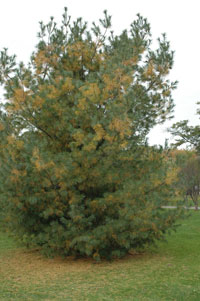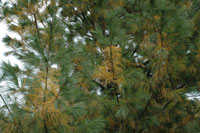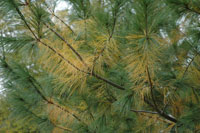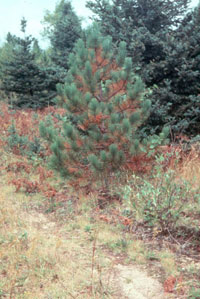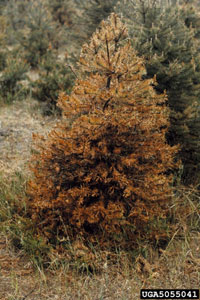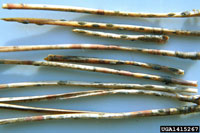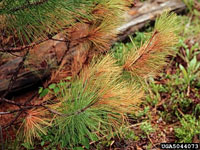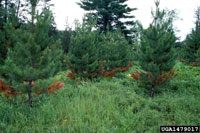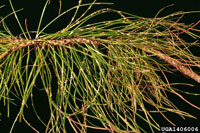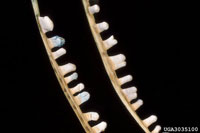Extension > Garden > Diagnose a problem > What's wrong with my plant? > Evergreen Trees and Shrubs > Pine > Needles drop prematurely
Pine > Needles > Needles drop prematurely
1 of 4
Seasonal needle drop
- Older, inner needles turn completely yellow without any spots
- Needles drop, usually in fall
- Lost needles may be two years old or more, depending on species
- All pines in Minnesota, but most noticeable on white pine
- More information on Seasonal needle drop
2 of 4
Lophodermium needle cast
Lophodermium seditiosum
- Yellow to brown spots appear in late summer or early fall
- 1 yr old needles turn brown in spring
- Gray to black ovals with a slit down the center (fungal spore producing structures) can be seen on dead needles
- Infected needles drop prematurely during the summer
- Lower branches and small trees most severely effected
- Common on red, Austrian and Scots pine
- More information on Lophodermium needle cast
3 of 4
Scleroderris canker
Gremmeniella abietina
- Needle clusters turn brown from the base up and are easily pulled off the branch
- Infected needles fall off in summer
- Buds on infected twigs fail to open
- Cutting into branch below discolored needles reveals yellow-green discoloration
- Cankers can kill branches or move into main stem and become perennial
- Damage is greatest to small (
- Jack and red pine most commonly affected
- More information on Scleroderris canker
4 of 4
Pine needle rust
Coleosporium asterum
- Yellow to orange spots or bands on needles
- Late spring to early summer, raised white tubes form on needle spots, these break open and release orange spores
- Lower branches most severely effected with browning and needle loss
- Many two and three needle pines are susceptible
- Also infects nearby members of the aster family
- Pine needle rust is a minor stress on the tree and no management is required
- More information on Pine needle rust



